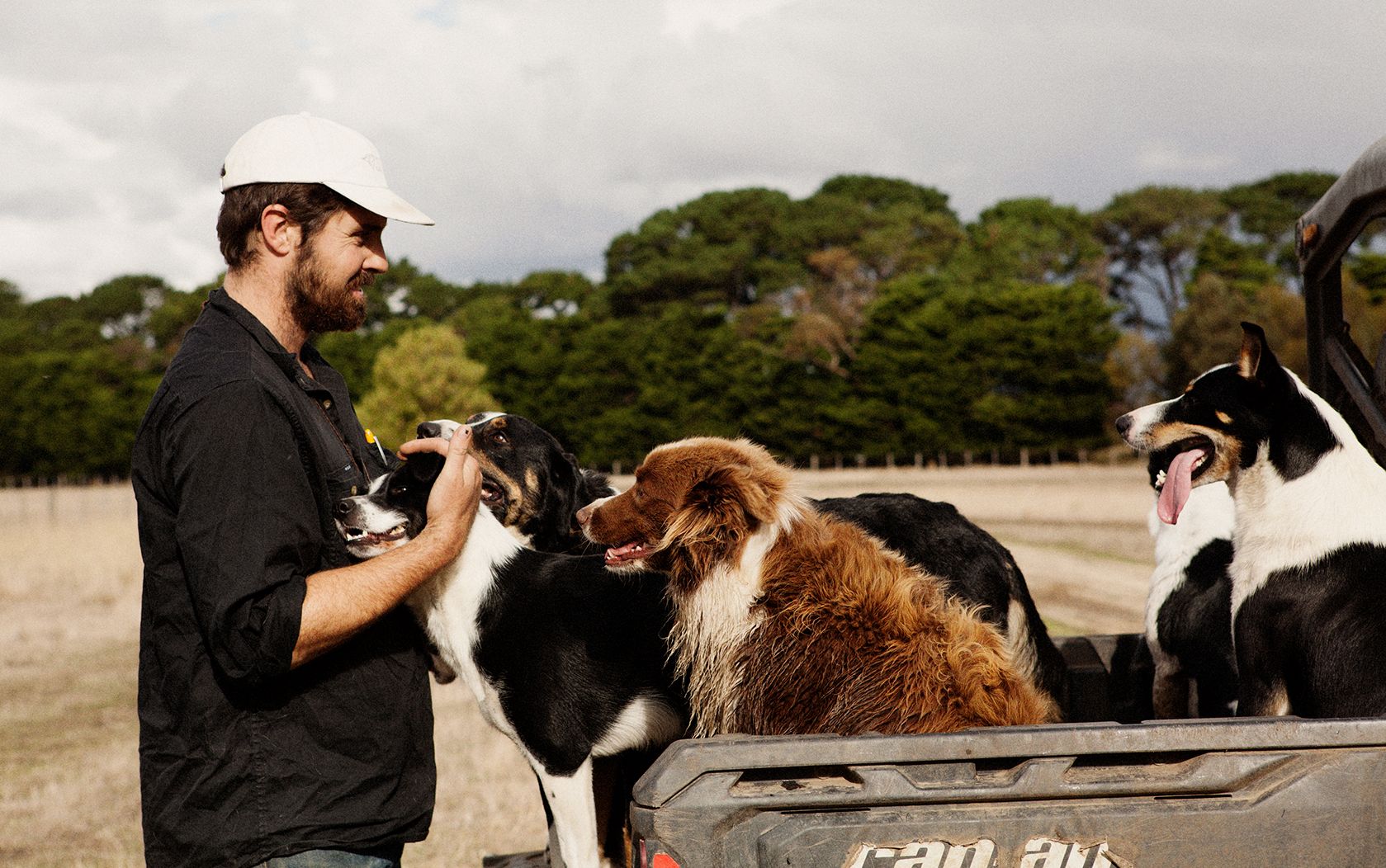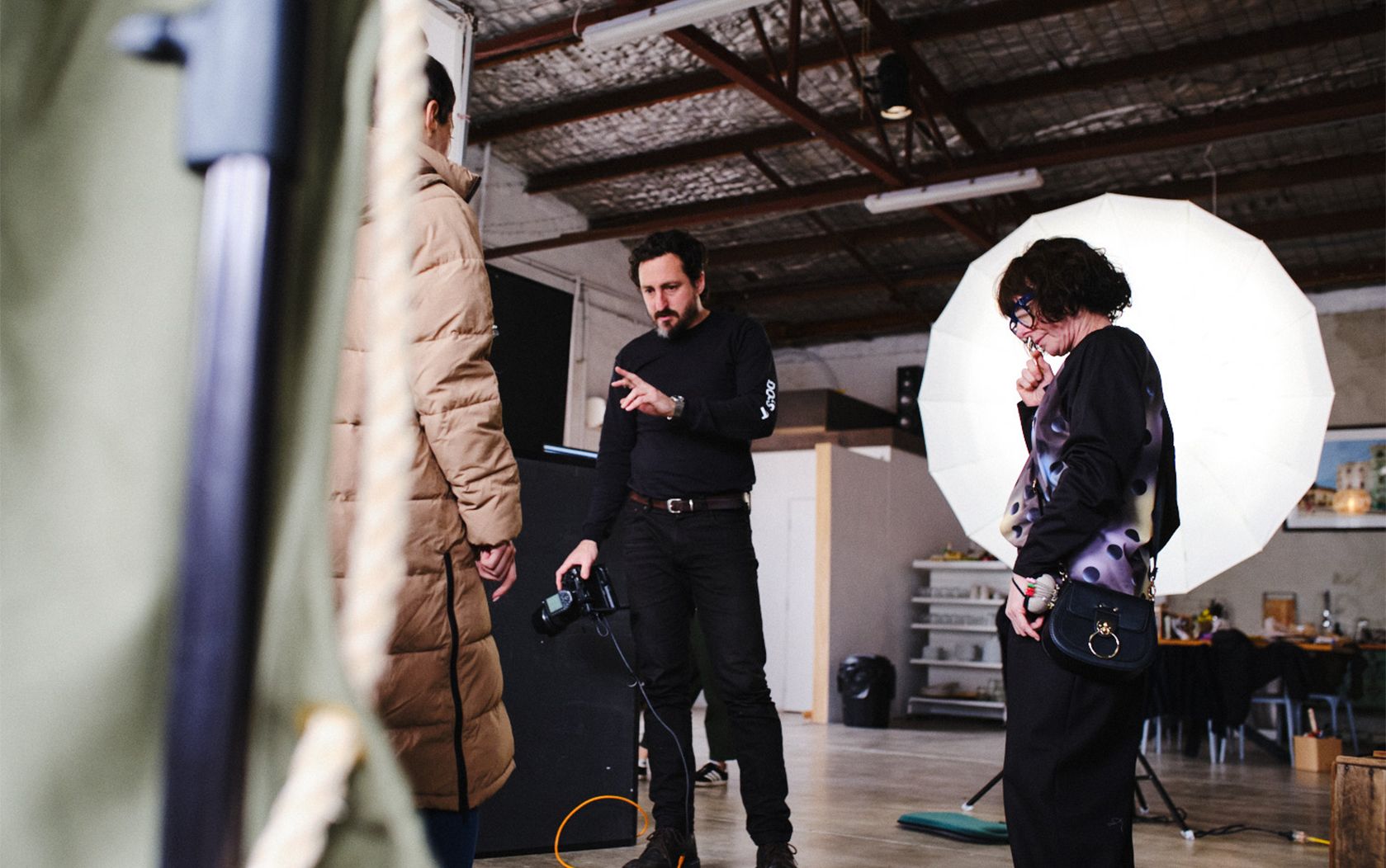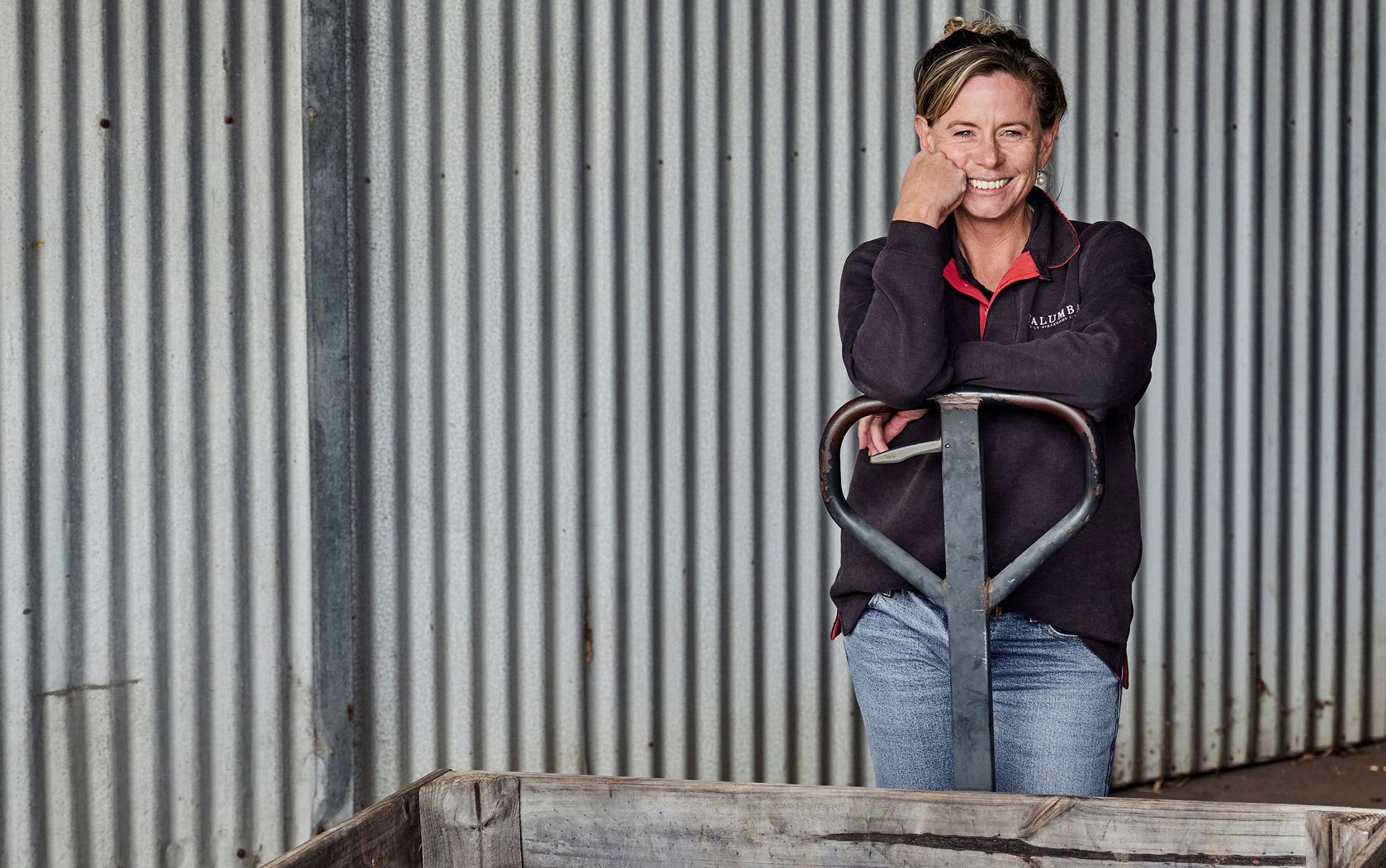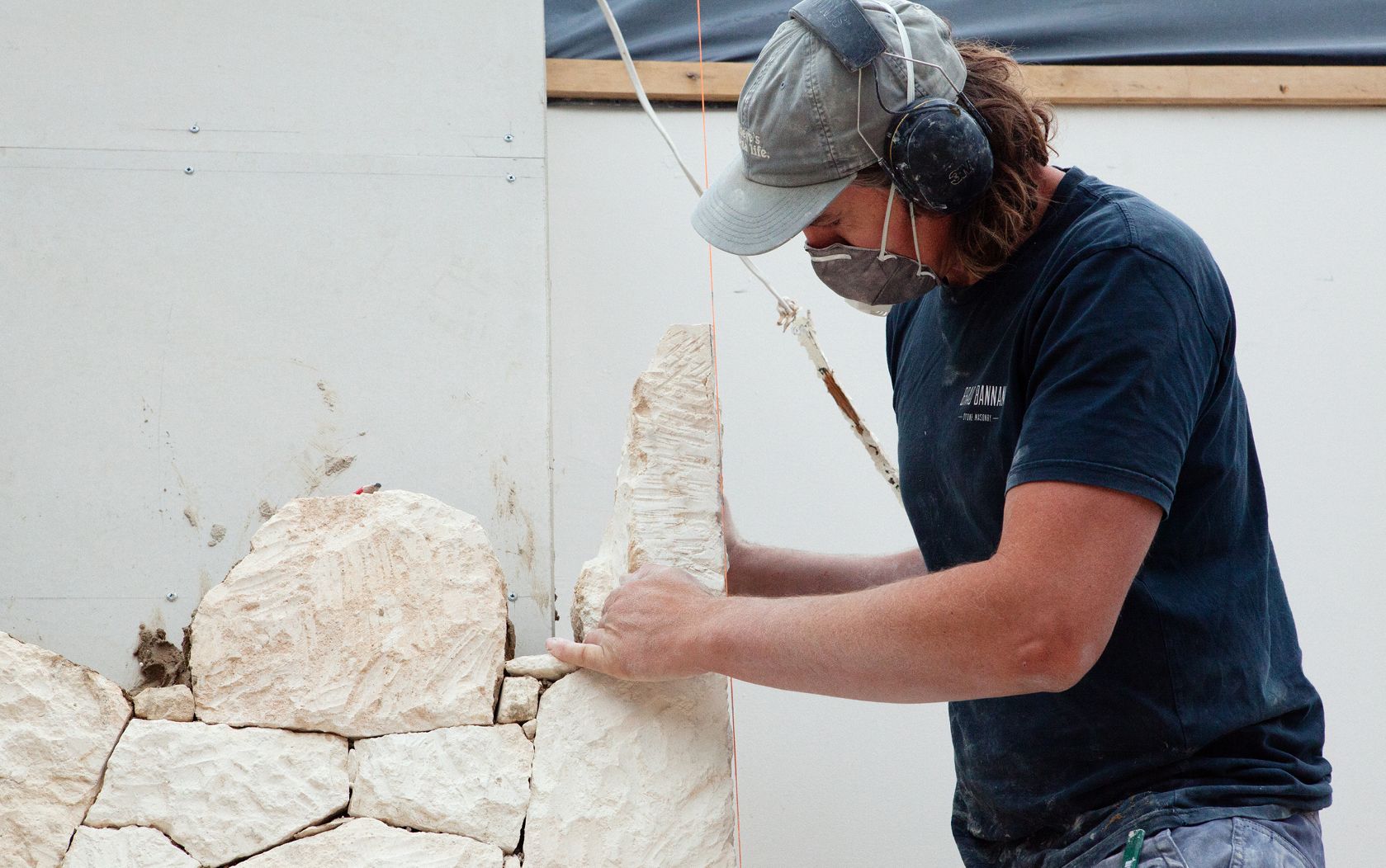The confidence to innovate and draw on a long history of hands-on experience
characterises the style of Yalumba’s Senior Red Winemaker, Kevin ‘KG’ Glastonbury.
Blessed with an excellent palate and the passion and talent for creating refined premium
wines, KG has been honoured by having his name on the bottle of the latest release of
their oldest and most important label, The Signature.
The confidence to innovate and draw on a long history of hands-on experience
characterises the style of Yalumba’s Senior Red Winemaker, Kevin ‘KG’ Glastonbury. Blessed with an excellent palate and the passion and talent for creating refined premium wines, KG has been honoured by having his name on the bottle of the latest release of their oldest and most important label, The Signature.
What first attracted you to a career in winemaking?
Reflecting back, I guess it was one of those lucky breaks.
I was not the best student at school – mucked around too much,
repeated year 12 and failed again – so the pressure was on to
get a job. I was proficient enough in maths and sciences to take a
laboratory assistant role at Chateau Tanunda, working vintage.
It was a small lab and we worked closely with the winemakers.
They tasted in front of me – I listened and learned – and they
were really helpful, nice people. Eventually I became manager;
but I thought I could grow and better myself, for my career and
family, to be a winemaker. The winemakers suggested I study,
which I wasn’t too keen on. Instead, on my own, I did bits and
pieces of nightshift winemaking work. The winery wouldn’t
sponsor me because I wasn’t qualified, so I left and entered the
world of winemaking. I found another company who hired me
as an assistant winemaker – and after four years there, I was
appointed Senior Red Winemaker at Yalumba, starting in 1999.
Would you say that doing it your own way, or experimenting,
has been a key part of your success?
We don’t have a program of experimentation here as such, but
as winemakers we have the licence to do what we think we
need to. What immediately springs to mind is our Tri-Centenary
Grenache. We do something unique with that which no one does
in the world of wine. When the ferment is finished, after 10 or
12 days, we leave it in contact with the skins for an extended
period of time. We started with 40 days, then 116 days, and
pushed the boundaries to 250 days. Then I wanted to push it
again – so for the 2022 wine, that stayed on skins for over 370
days, which is mind-boggling. I really wanted to have a crack
at it to see what happens, and my boss said: just go for it.
Is winemaking more of a science or an art, in your opinion?
Even though I have a science-ish background, for me it’s more
of an art which I’ve learnt by listening and talking to people for
many years. It’s the art of hands-on experience and practical
knowledge that has given me the confidence to challenge
the chemistry – because I didn’t study and wasn’t taught the
direction of how things should be. If you went back 40 years
to the 1980s, it was a very technical period of winemaking.
All about purity, filtering wines before fermenting, and being
pristine. Nowadays, we allow our ferments to be cloudy, use
natural yeast – more of a let-it-go style. They’re very different
approaches, but both valid.
What first attracted you to a career in winemaking?
Reflecting back, I guess it was one of those lucky breaks. I was not the best student at school – mucked around too much, repeated year 12 and failed again – so the pressure was on to get a job. I was proficient enough in maths and sciences to take a laboratory assistant role at Chateau Tanunda, working vintage. It was a small lab and we worked closely with the winemakers. They tasted in front of me – I listened and learned – and they were really helpful, nice people. Eventually I became manager; but I thought I could grow and better myself, for my career and family, to be a winemaker. The winemakers suggested I study, which I wasn’t too keen on. Instead, on my own, I did bits and pieces of nightshift winemaking work. The winery wouldn’t sponsor me because I wasn’t qualified, so I left and entered the world of winemaking. I found another company who hired me as an assistant winemaker – and after four years there, I was appointed Senior Red Winemaker at Yalumba, starting in 1999.
Would you say that doing it your own way, or experimenting, has been a key part of your success?
We don’t have a program of experimentation here as such, but as winemakers we have the licence to do what we think we need to. What immediately springs to mind is our Tri-Centenary Grenache. We do something unique with that which no one does in the world of wine. When the ferment is finished, after 10 or 12 days, we leave it in contact with the skins for an extended period of time. We started with 40 days, then 116 days, and pushed the boundaries to 250 days. Then I wanted to push it again – so for the 2022 wine, that stayed on skins for over 370 days, which is mind-boggling. I really wanted to have a crack at it to see what happens, and my boss said: just go for it.
Is winemaking more of a science or an art, in your opinion?
Even though I have a science-ish background, for me it’s more of an art which I’ve learnt by listening and talking to people for many years. It’s the art of hands-on experience and practical knowledge that has given me the confidence to challenge the chemistry – because I didn’t study and wasn’t taught the direction of how things should be. If you went back 40 years to the 1980s, it was a very technical period of winemaking. All about purity, filtering wines before fermenting, and being pristine. Nowadays, we allow our ferments to be cloudy, use natural yeast – more of a let-it-go style. They’re very different approaches, but both valid.
What’s your philosophy or advice when mentoring the new
breed of winemakers?
One of the things I tell the grads is to relax a bit, don’t aim
to be technically perfect, and to challenge the way they’ve
been taught. Also, to never assume that something’s going
to happen because it seems right. Look at the results from
the laboratory, or the weather map, and look with intent. It’s
important for people to stretch themselves, so I get them to
actually make a small batch of wine on their own. That’s the
only way to learn: to take ownership and responsibility for
decisions and think for themselves. Seeing them grow from
that is really pleasing.
What wines have you been responsible for steering and
producing?
Since I started here, my portfolio has been all the Yalumba
super-premium reds. Over that time, I’ve also been able to
create six or seven wines as the main maker, in conjunction
with my boss and with the owner, Robert Hill-Smith; then
it’s fallen back on me to drive it and put it in a style. That
includes the Tri-Centenary Grenache, The Caley – our most
expensive, sought-after blend – plus several others that
were not labels before I joined the company. I’ve also curated
and nurtured The Signature, which is Yalumba’s flagship
wine and our longest serving label initially released in 1966
with a 1962 vintage.
Could you describe the tradition and significance of having
your own name on The Signature?
The very first announcement was made by Robert’s father,
Wyndham Hill-Smith. Since then, every Signature release
has acknowledged someone who’s made a significant
contribution to Yalumba. For those of us who work here, the
ultimate accolade is having your name on The Signature
bottle. My turn came at the end of last year – shared with
our chief viticulturist, Robin Nettelbeck, who had retired after
45 years – and honestly it was out of the blue. I had by that
time made The Signature for 23 years, and Robert decided
it was worthy to have both a viniculturist and a viticulturist
on the label with our stories on the back. The wine formally
came out in the last few weeks, so I’ve been showing it
around the country a bit. It’s been so satisfying and yet
humbling; I could not be happier.
What’s your philosophy or advice when mentoring the new breed of winemakers?
One of the things I tell the grads is to relax a bit, don’t aim to be technically perfect, and to challenge the way they’ve been taught. Also, to never assume that something’s going to happen because it seems right. Look at the results from the laboratory, or the weather map, and look with intent. It’s important for people to stretch themselves, so I get them to actually make a small batch of wine on their own. That’s the only way to learn: to take ownership and responsibility for decisions and think for themselves. Seeing them grow from that is really pleasing.
What wines have you been responsible for steering and producing?
Since I started here, my portfolio has been all the Yalumba super-premium reds. Over that time, I’ve also been able to create six or seven wines as the main maker, in conjunction with my boss and with the owner, Robert Hill- mith; then it’s fallen back on me to drive it and put it in a style. That includes the Tri-Centenary Grenache, The Caley – our most expensive, sought-after blend – plus several others that were not labels before I joined the company. I’ve also curated and nurtured The Signature, which is Yalumba’s flagship wine and our longest serving label, initially released in 1966 with a 1962 vintage.
Could you describe the tradition and significance of having your own name on The Signature?
The very first announcement was made by Robert’s father, Wyndham Hill- mith. Since then, every Signature release has acknowledged someone who’s made a significant contribution to Yalumba. For those of us who work here, the ultimate accolade is having your name on The Signature bottle. My turn came at the end of last year – shared with our chief viticulturist, Robin Nettelbeck, who had retired after 45 years – and honestly it was out of the blue. I had by that time made The Signature for 23 years, and Robert decided it was worthy to have both a viniculturist and a viticulturist on the label with our stories on the back. The wine formally came out in the last few weeks, so I’ve been showing it around the country a bit. It’s been so satisfying and yet humbling; I could not be happier.
In your evolution as a winemaker have you explored other wine
styles?
In my time here, I’ve made a lot of white wine. And the company
where I started was heavily involved with fortified winemaking
and distillation, so I’ve dabbled in that world too. When the maker
of spirits and fortifieds retired at Yalumba, the responsibility
immediately came to me as his understudy. It’s fun, and something
I’ve always loved doing. Fortified wine and spirits can’t be left
on their own for 20 years, you’ve always got to be tasting and
revisiting them, to assess how they are developing. But I don’t
really wonder about what to challenge myself with next, that
just happens. It evolves with your daily role, which for me is
very diverse. Probably most red winemakers who think they’re
any good end up making Pinot Noir. So that may be the final box
to tick one day, to make a great Pinot.
In your evolution as a winemaker have you explored other wine styles?
In my time here, I’ve made a lot of white wine. And the company where I started was heavily involved with fortified winemaking and distillation, so I’ve dabbled in that world too. When the maker of spirits and fortifieds retired at Yalumba, the responsibility immediately came to me as his understudy. It’s fun, and something I’ve always loved doing. Fortified wine and spirits can’t be left on their own for 20 years, you’ve always got to be tasting and revisiting them, to assess how they are developing. But I don’t really wonder about what to challenge myself with next, that just happens. It evolves with your daily role, which for me is very diverse. Probably most red winemakers who think they’re any good end up making Pinot Noir. So that may be the final box to tick one day, to make a great Pinot.
CREATING THE CALEY
A Quintessentially Australian Wine
The Caley is a blend of our Coonawarra Cabernet and Barossa Shiraz. The Australian wine industry was once mainly fortifieds, and its table wines were loosely based on full-bodied, bold styles with a firm finish. These Cabernet- riven wines, called clarets, were ‘the best of’ that Australia would expect to drink. The reference from our museum is a Yalumba claret from 1894 that Fred Caley Smith was drinking at the foothills of the Himalayas. Fred was a horticulturalist who travelled the world and was involved in opening up markets for Yalumba’s wines and our canned orchard fruits. The Caley was named in his honour, but also to reflect our long history in making clarets.
CREATING THE CALEY
A Quintessentially Australian Wine
The Caley is a blend of our Coonawarra Cabernet and Barossa Shiraz. The Australian wine industry was once mainly fortifieds, and its table wines were loosely based on full-bodied, bold styles with a firm finish. These Cabernet- driven wines, called clarets, were ‘the best of’ that Australia would expect to drink. The reference from our museum is a Yalumba claret from 1894 that Fred Caley Smith was drinking at the foothills of the Himalayas. Fred was a horticulturalist who travelled the world and was involved in opening up markets for Yalumba’s wines and our canned orchard fruits. The Caley was named in his honour, but also to reflect our long history in making clarets.
A great many thanks to Kevin for taking the time to speak with us
on the eve of his trip to Europe and the UK – a popular market for
The Caley. When he’s not busy at the winery, KG is likely to be on the
road or travelling abroad, requiring a well-crafted boot that’s both
resilient and versatile.
A great many thanks to Kevin for taking the time to speak with us on the eve of his trip to Europe and the UK – a popular market for The Caley. When he’s not busy at the winery, KG is likely to be on the road or travelling abroad, requiring a well-crafted boot that’s both resilient and versatile.





